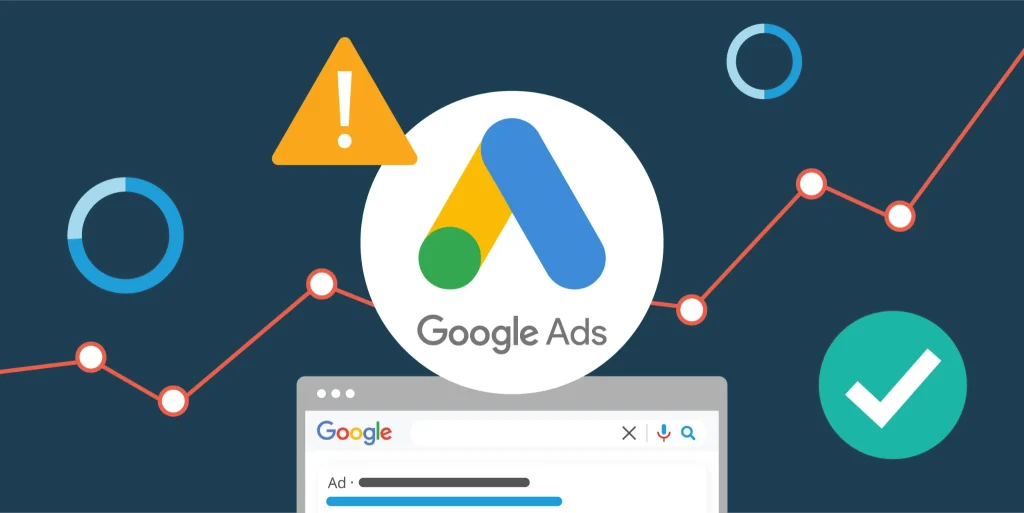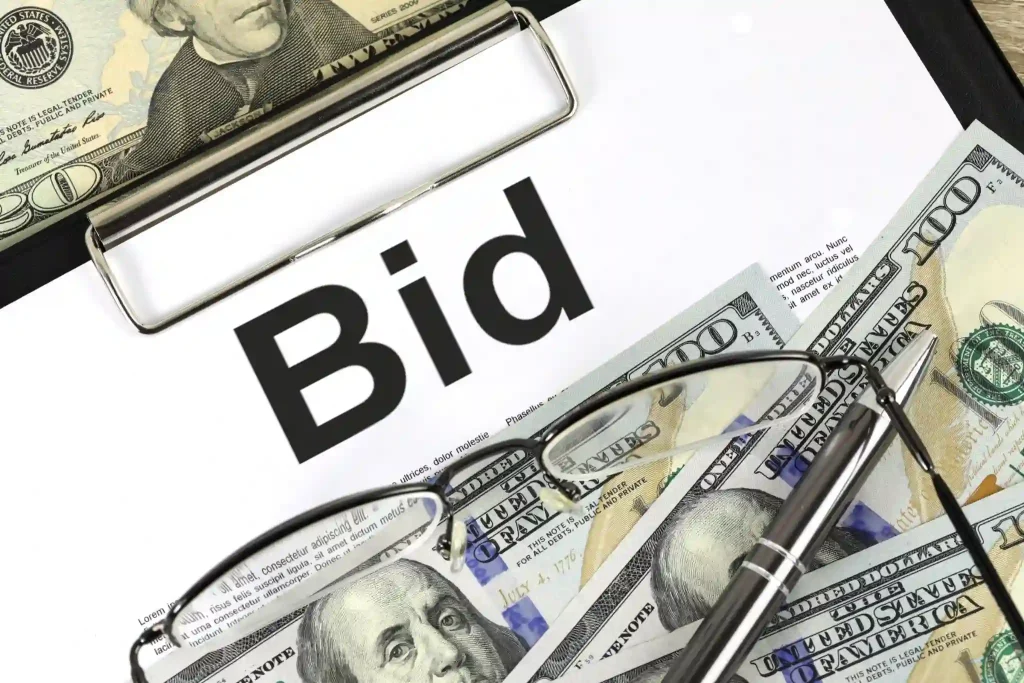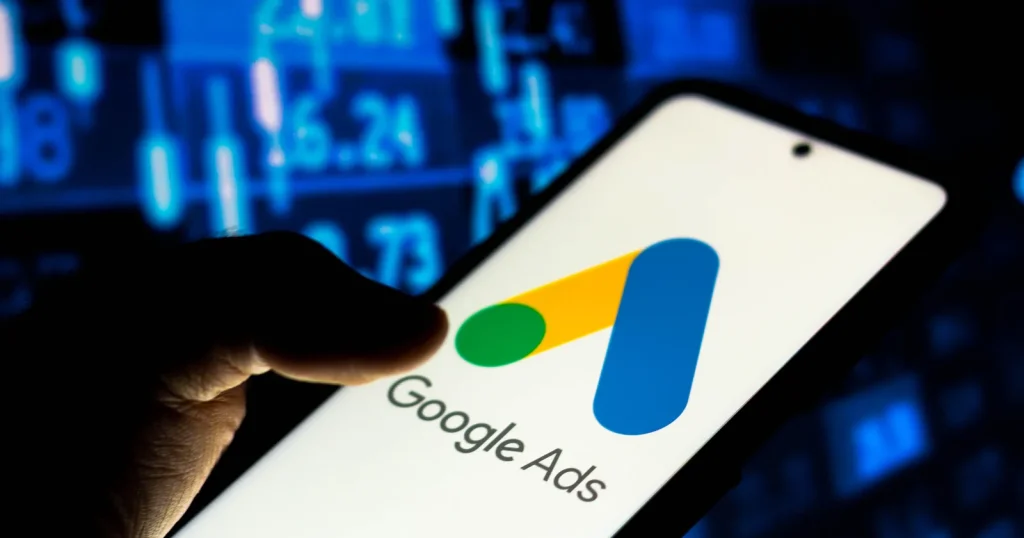Running ads on Google can drain a budget fast when you do not control how bids are set.
A clear Google Ads bidding strategy will tell the system how much you want to pay for each click, conversion, or view so that every cent works toward a measurable result.
Without it, you are simply letting Google spend money without direction.
Hence, this guide will explain how Google Ads bidding works and details each major bidding strategy so you can make decisions that improve return on investment.
If you prefer expert help from the start, contact Ostenpowers to see how a professional team sets up and manages profitable campaigns.
What is Google Ads Bidding?

Google Ads bidding is the process of setting the amount you are willing to pay when someone interacts with your ad. You can bid for a click, a conversion, or a view, depending on the campaign type.
Every time a user enters a search query or browses a site on the Google Display Network, Google holds a quick auction. Your bid competes with other advertisers, and the winner’s ad appears in the most visible spots.
The bid alone does not decide the outcome. Google also looks at quality score, which measures ad relevance, expected click-through rate, and landing page experience.
A higher quality score lets you pay less for a better position, while a weak ad forces you to pay more just to show up.
How Google Ads Bidding Works

Each time a search is made or an ad placement becomes available, Google runs an instant auction. Advertisers enter with their bids and quality scores. Then, the system combines bid amount with quality factors to calculate ad rank.
The higher the rank, the better the placement and the lower the cost per click you actually pay. This means strong ad copy and a fast, relevant landing page can reduce costs even when your maximum bid stays the same.
For a detailed look at the auction process and how ad rank affects cost, read how Google Ads works.
8 Google Ads Bidding Strategies to Improve Your ROI

Choosing the right Google Ads bidding strategy decides how well your budget turns into real results. Each method works differently and suits different goals. Below are the main strategies written in full paragraphs with no skinny one-liners.
1. Manual CPC (Cost-Per-Click)
Manual CPC gives you full control over the maximum price you will pay for each click. You set a bid for every keyword or ad group, and Google never spends more than the limit you enter.
Because you decide each amount, you can raise bids on high-performing keywords and cut spend on poor ones whenever you like. This is a good starting point for small budgets or test campaigns because you can track every cent and stop paying for irrelevant traffic.
Pair this strategy with high-quality ads and a fast landing page to raise quality score, which lowers the actual cost per click even when your maximum bid stays the same.
For more insight on cost planning, review the guide on Google Ads cost.
2. Enhanced CPC (ECPC)
Enhanced CPC mixes manual control with Google automation. You still set a base bid, but the system can slightly increase or decrease the bid during the auction if it predicts a higher chance of conversion.
This small layer of automation uses real-time signals such as device type, location, and user behaviour to push more budget toward clicks that are likely to convert.
ECPC works well when you want to protect your budget cap but still allow smart adjustments that improve conversion rates without constant manual tweaking.
3. Maximise Clicks
Maximise Clicks is a fully automated option built to get the highest number of clicks within the daily budget you provide.
Instead of entering bids for each keyword, you simply tell Google how much you want to spend each day, and the system handles bidding to bring in as many visits as possible.
This strategy is useful when you need quick traffic for brand awareness, list building, or early data gathering before moving to a conversion-focused approach.
Setting a maximum CPC limit inside this strategy can prevent runaway costs on expensive keywords while still letting Google chase volume.
4. Target CPA (Cost Per Acquisition)
Target CPA focuses on driving conversions at or below a cost you set.
You provide a desired cost per conversion, then, Google automatically sets bids to meet that goal by analysing historical conversion data and predicting which auctions are most likely to result in a sale or lead.
This strategy works best when you already have reliable conversion tracking and enough past data for Google to model user behaviour.
With accurate tracking, Target CPA lets you scale spending while keeping acquisition costs stable, which is essential for lead generation or ecommerce campaigns.
5. Target ROAS (Return on Ad Spend)
Target ROAS aims for a specific revenue return for every dollar spent. You give Google a target percentage, such as 400%, meaning you want four dollars in revenue for every dollar of ad spend.
The system uses conversion value data to raise bids on auctions likely to bring high revenue and reduce bids on weaker opportunities.
This method suits e-commerce or any business where the value of each sale varies because it directs more budget toward higher value conversions.
To make this strategy effective, you must track conversion values accurately. Otherwise, Google cannot calculate the true return.
6. Maximise Conversions
Maximise Conversions drives the highest possible number of conversions within your budget by letting Google set bids in real time.
The system analyses signals such as device, time, and location to predict which users are most likely to convert and automatically adjusts bids to win those auctions.
It requires no target CPA and no bid settings beyond your daily budget. This strategy is ideal when the goal is pure conversion volume and you are willing to let the algorithm spend aggressively to capture every possible sale or lead.
For a deeper look at automation options, check the detailed post on Google Ads smart bidding.
7. Maximise Conversion Value
Maximise Conversion Value works like Maximise Conversions but focuses on total revenue instead of conversion count.
Google optimises bids to capture users who are likely to generate higher order values so that the total value of all conversions reaches the highest possible amount within your budget.
This approach is powerful for e-commerce stores selling items with different price points because it directs spend toward customers who are ready to buy higher-priced products.
Accurate revenue tracking is critical, or the system will not know which auctions truly bring the best value.
8. Target Impression Share
Target Impression Share is designed to secure ad visibility across a set percentage of eligible auctions.
You choose where you want your ad to appear, at the absolute top of the page, top of the page, or anywhere on the page, and the percentage of times you want it to show. Google then adjusts bids to reach that visibility goal while respecting any maximum CPC limit you set.
This strategy is valuable for brand awareness campaigns or for dominating critical local searches, such as competitive service keywords in a market like Google Ads Sydney.
Because it can drive bids higher to win visibility, it works best with tight keyword targeting and careful negative keyword lists to keep spend under control.
FAQs about Google Ads Bidding Strategy
Before you pick a bidding method, it helps to clear up the common questions advertisers keep asking. These answers explain key terms and clear the confusion so you can choose a Google Ads bidding strategy with confidence.
What are the main types of bidding strategies in Google Ads?
The core list includes Manual CPC, Enhanced CPC, Maximise Clicks, Target CPA, Target ROAS, Maximise Conversions, Maximise Conversion Value, and Target Impression Share. Each targets different outcomes such as traffic, sales, or brand reach.
What are the benefits of automated bidding?
Automated bidding saves time and uses machine learning to adjust bids based on device, location, and search intent. Once enough data is collected, it often beats manual adjustments in speed and accuracy.
What is the difference between smart bidding and automated bidding?
Automated bidding covers every automatic method. Smart bidding is a smaller group inside it that focuses only on conversions and uses deeper signals like user intent.
Conclusion
Choosing the right Google Ads bidding strategy is an ongoing process, not a one-time setup. Each approach offers a different balance of control, automation, and cost efficiency.
Start with the method that fits your current campaign goal, monitor the results carefully, and adjust or switch strategies as your data and business needs evolve.
To help you succeed, Ostenpowers provides full-service Google Ads management built on data analysis and real-world testing. Our team plans, launches, and optimises campaigns to maximise ROI while keeping budgets under control.
If you’re ready to scale your ads with a strategy that matches your goals, contact our ads experts in Sydney today to book a free consultation and get a customized bidding plan for your next campaign.








